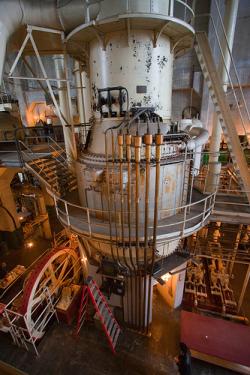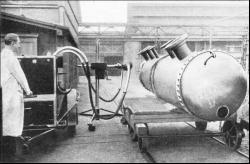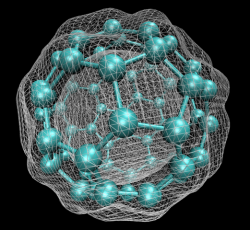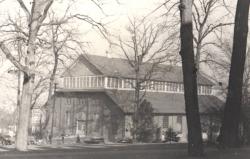USA


On Right: Tech Tower
Photo circa 1899 Era_date_from: 1888

In 1961, in the National Institutes of Health Headquarters (Bethesda, MD), Marshall Nirenberg and Heinrich Matthaei discovered the key to breaking the genetic code when they conducted an experiment using a synthetic RNA chain of multiple units of uracil to instruct a chain of amino acids to add phenylalanine. The uracil (poly-U) served as a messenger directing protein synthesis. This experiment demonstrated that messenger RNA transcribes genetic information from DNA, regulating the assembly of amino acids into complex proteins.

From 1956 to 1993, the GE Re-entry Systems facility was home to thousands of engineers and technicians who solved the problem of vehicles successfully reentering the Earth’s atmosphere. As described by aerospace pioneer Theodore Von Karman, “ Reentry… is perhaps the most difficult problem one can imagine.” Whether it was the first operational reentry vehicle for the Atlas ICBM, the recovery of the first man-made object from orbit, or the first probe to enter Jupiter’s atmosphere, some of the most significant milestones in aerospace were accomplished by those working in this facility.
The Garfield Thomas Water Tunnel is a unique experimental facility for hydrodynamic research and testing. The 48-inch (1.2-meter) diameter water tunnel enables the research staff to conduct basic and applied investigations in the fields of cavitation, hydroacoustics, turbulence, transition, hydrodynamic drag, and hydraulic and subsonic turbomachinery. Instrumentation and testing methods have been developed to study noise, vibration, vehicle dynamics, and the interaction between the propulsor and vehicle body.

Galveston Island is a barrier island located two miles off the Texas coast. The island is about 3 miles wide at its widest and about 28 miles long. The Galveston Seawall extends over 10 miles along Galveston's oceanfront, protecting life and property against hurricanes and tropical storms.


In early September 1985, a team of scientists discovered a previously unknown pure carbon molecule, C60, which they dubbed buckminsterfullerene. The name was chosen because the geodesic domes of Buckminster Fuller provided a clue that the molecule’s atoms might be arranged in the form of a hollow cage. The structure, a truncated icosahedron with 32 faces, 12 pentagonal and 20 hexagonal, has the shape of a soccer ball.

In 1907, John Fritz, known as the "Father of the Steel Industry in the United States," rejoined the Lehigh University Board of Trustees after an absence of a decade. He began the development of what would prove to be his greatest gift to Lehigh: a modern engineering laboratory and funding for its construction.

The Fresno scraper established the basis for the modern earthmoving scraper, being able to scrape and move a load of soil, then discharge it at a controlled depth. It quadrupled the productivity of manual labor, replacing hand shoveling of earth into horse carts.


